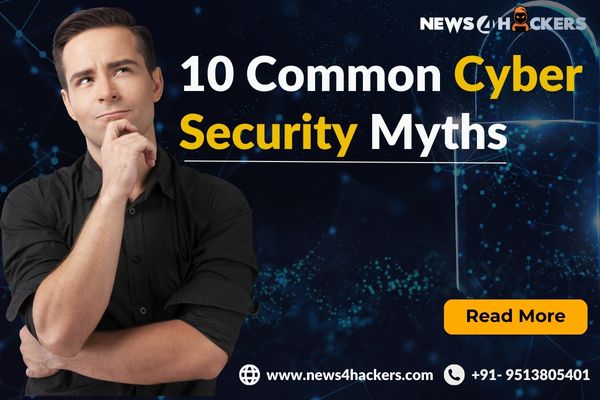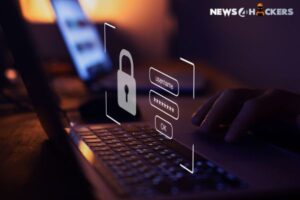10 Common Cyber Security Myths

The commencement of a new year presents a favorable occasion to undertake a comprehensive evaluation of one’s cyber security measures and debunk prevalent misconceptions that persist in the realm of cyber security. Believing in these fallacies facilitates scammers’ ability to get personal and financial data from your clientele. Recognizing the falsehood of these claims becomes the initial stride toward enhancing internet safety for all individuals. In this article, we will try to shed some light on the 10 Common Cyber Security Myths and try to resolve them so that aspirants who are thinking of starting a fantastic career in cybersecurity can opt for this background as soon as possible.
1. Security software slows down or interrupts workflow.
This assertion is unfounded, and it is our contention that the propagation of this misconception stems from inadequate execution of security measures rather than inherent deficiencies in the technologies employed. If security tools have been appropriately implemented, users should be able to benefit from enhanced security measures without experiencing any negative impact on their productivity.
2. I have a strong password; I am safe.

Although possessing a robust password is vital, regrettably, it does not suffice in isolation. One effective approach to enhance security is the use of multi-factor authentication (MFA), which necessitates users to verify their identity through additional means, such as utilizing their mobile device or employing an application like Google Authenticator. With the implementation of Multi-element Authentication (MFA), even in the event that thieves are able to get usernames and passwords, they will still be unable to gain access without the additional ‘second element.’
3. Security costs too much.
Organizations that adopt such a mindset frequently fail to take into account the potential negative financial implications. The financial impact of data breaches on businesses is expected to surpass the costs associated with using dedicated security solutions as a preventive measure. According to Capita, the average financial impact of a data breach is estimated to be $3.86 million. This estimation takes into account various factors such as the expenses incurred in detecting and escalating the breach, notifying the affected individuals and regulatory bodies, the loss of business and damage to reputation, as well as the costs associated with fines, legal fees, and other necessary measures to rectify the situation.
4. I will know straight away if my business is attacked.
This is hardly the case in contemporary times. In the past, there existed certain conspicuous indicators, such as pop-up advertisements or sluggish browser performance, that may serve as relatively straightforward warnings of potential fraudulent activities. However, fraudsters have progressively adopted more covert tactics, rendering their operations less readily discernible. The act of hacking is a covert criminal activity wherein perpetrators have a vested interest in maintaining a low profile for an extended duration. The duration of their access to your systems directly correlates with the quantity of data they can potentially pilfer.
5. Cybersecurity is solely the IT department’s responsibility.

Regrettably, the primary cause of cybersecurity breaches is attributed to employees who demonstrate negligence. Consequently, it is imperative to recognize that the responsibility of maintaining organizational online security cannot be entirely entrusted to the IT department. Instead, it necessitates the active participation of all individuals within the business. It is recommended that all personnel utilize company laptops, tablets, and phones equipped with a minimum of two-factor authentication. Additionally, it is imperative that individuals regularly update their installed security software to maintain optimal security measures.
6. Cybersecurity threats only come from outside sources.
Building upon the previous assertion, existing research indicates that a substantial proportion of data breaches, potentially reaching up to 75%, originate from inside sources. In certain instances, the source of such occurrences may be a dissatisfied employee seeking retribution. However, more frequently, it can be attributed to personnel who have not received adequate security training or are not adhering to established security rules.
7. My data isn’t important; it’s not a big deal if I am hacked.
This phenomenon can be characterized as an illusion. Even in cases where hackers obtain solely usernames and passwords, the consequences can be highly detrimental for individuals whose data has been hacked. This is mostly due to the widespread practice of utilizing the same login credentials across many services, including online banking.
8. We use Apple devices because they can’t be hacked.
There exists a prevailing belief that Apple goods possess an inherent immunity to cyber attacks; nevertheless, this assertion is not congruent with reality. Apple goods are subject to hacking, and customers who hold the belief that their gadgets are impervious to such attacks are at a higher risk of experiencing data loss.
9. It is easy to spot phishing.
Phishing is a prevalent method employed for the purpose of illicitly acquiring individuals’ personal information or unauthorized entry into a system, typically executed through the creation of a counterfeit version of a well-known service. The deceptive nature of certain emails can be so effectively concealed that anyone of any background or level of expertise may become susceptible to their manipulative tactics. It is imperative to exercise caution when accessing hyperlinks and to refrain from assuming immunity to potential vulnerabilities. It is imperative to ensure that the staff members possess a comprehensive understanding of the potential dangers associated with phishing. Training can enhance individuals’ comprehension of the intricacies inherent in sophisticated scams, as well as their awareness of the susceptibility to falling victim to such fraudulent activities.
10. I don’t have a computer; I can’t be hacked.
In contemporary times, the scope of targets susceptible to hacking and fraudulent activities extends beyond computers, owing to the proliferation of internet-connected devices. Fraudsters target many electronic devices, including smartphones, routers, and even intelligent televisions. It is imperative to ensure the safeguarding of all endpoints.
Having addressed several misconceptions, we can now explore strategies to enhance your security.
Ultimately, a person with a positive attitude and clear views about cybersecurity can now start a fantastic 1 Year Diploma in Cyber Security Course by Craw Security, the Best Cybersecurity Training Institute in India. News4Hackers, the Best Cybersecurity Info and News Portal recommends you start a career in cybersecurity with the help of world-class career guidance by educational consultants of Craw Security. You just need to dial the hotline mobile number, +91-9513805401, and have a word with the highly excelled team of educational counselors.
About The Author:
Yogesh Naager is a content marketer who specializes in the cybersecurity and B2B space. Besides writing for the News4Hackers blog, he’s also written for brands including CollegeDunia, Utsav Fashion, and NASSCOM. Naager entered the field of content in an unusual way. He began his career as an insurance sales executive, where he developed an interest in simplifying difficult concepts. He also combines this interest with a love of narrative, which makes him a good writer in the cybersecurity field. In the bottom line, he frequently writes for Craw Security.
Read More news Here:





